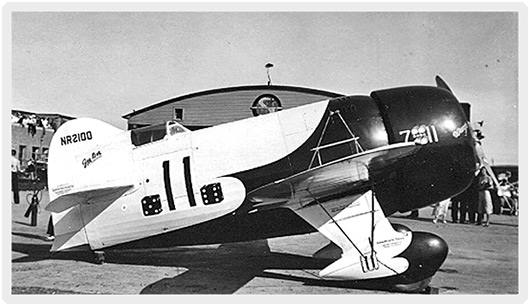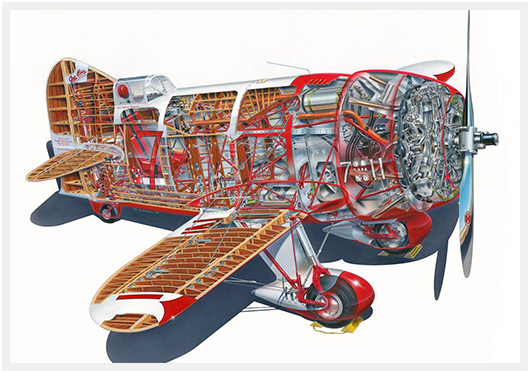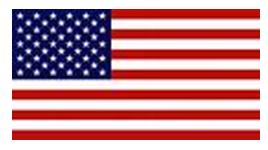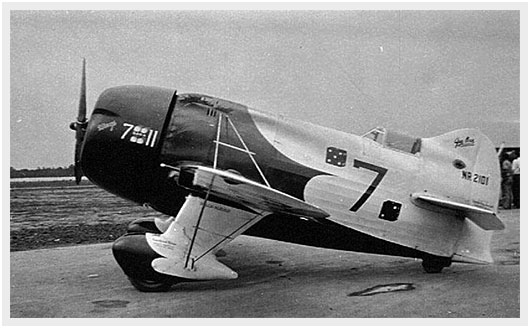More Gee Bee 'R' Awesomeness... With Some Help From Gizmodo.com.au
 Thursday, November 29, 2012 at 10:07PM
Thursday, November 29, 2012 at 10:07PM  800hp Gee Bee R-1 from the 1930's - with the slightly more blunt cowl than the 450hp R-2
800hp Gee Bee R-1 from the 1930's - with the slightly more blunt cowl than the 450hp R-2
It's true, my lifelong adoration for the Gee Bee racers is on the threshold of becoming an obsession. So we're taking another little journey into the Granville Brothers raindrop-inspired flying machines. The pic above is of NR2100, the R-1 powered by an 800hp Pratt & Whitney R-1340. This airplane was piloted by the amazing Jimmy Doolittle to victory in the 1932 Thompson Trophy closed-course race with a winning speed of 252.686 mph. The prize money for winning that race was $4,500.
I'm just beginning to get my head better wrapped around the basic differences for easy identification between the R-1 and R-2. I probably knew all this when I was younger, but my head has a hard drive that's dangerously close to being full, or at the very least in desperate need of a defrag! It doesn't help that there are several variations or minor modifications of these racers over their careers, along with a hybrid of the two that appeared in 1934. That airplane, known as the R-1/R-2 Super Sportser, had the fuselage from the R-1 (lengthened about 18") and the wings of the R-2, plus the big engine (possibly putting out 1,000hp) and had a snug cowl with bumps on it for the rocker covers. That airplane crashed shortly after departing Burbank on the long race to Cleveland for the Bendix Trophy in the 1935 National Air Races. Pilot Cecil Allen was killed and the era of the stubby Gee Bee racer came to an end.
Oh, the basic ways to ID the aircraft are:
The R-1 has the big engine, the more blunt front shape on the cowl, the NR2100 registration number and the #11 race number.
The R-2 has the smaller engine, the tighter fitting cowl, the NR2101 registration number and the #7 race number.
The R-1/R-2 hybrid has a big engine, the snug cowl with bumps for the rocker covers, the old R-2 NR2101 registration number and race #7.
I hope to go much more in-depth on the wide range of Gee Bee aircraft in the future, but at least that gives you some basics to wrap your head around on the the 'R' model racers.
For something extra and extremely cool, check out the awesome Gee Bee R-2 cutaway drawing that was recently posted by Gizmodo.com.au. Click the pic below to enlarge it over there (hi-res) and click here to see the other interesting cutaway drawings in their post that included the Gee Bee.
 Click pic to see the Gizmodo hi-res version from their post on cutaway drawings
Click pic to see the Gizmodo hi-res version from their post on cutaway drawings
 Martt |
Martt |  3 Comments |
3 Comments | 

















































































